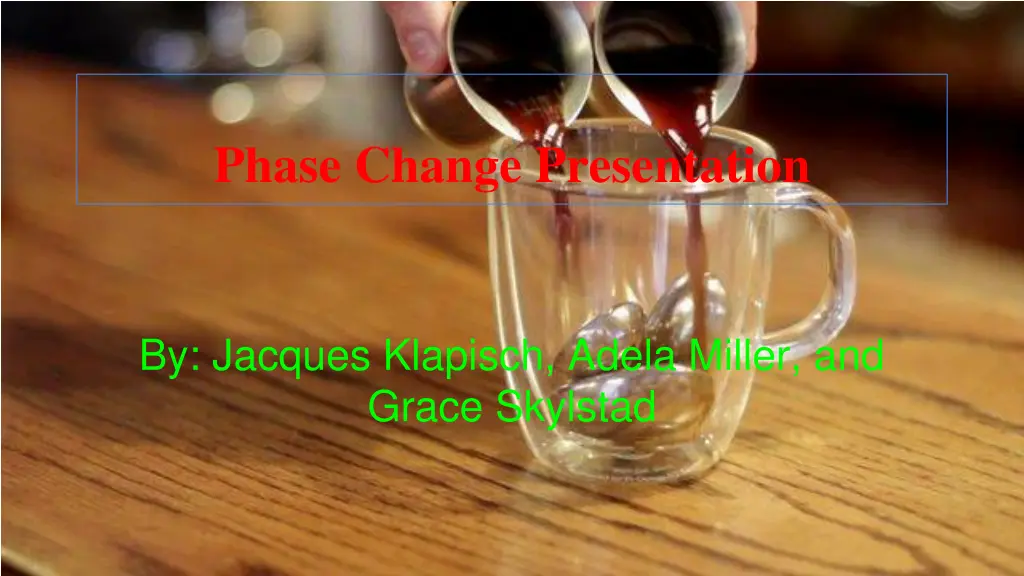
Understanding Phase Changes and Boiling Points in Science Experiments
Explore a science experiment involving coffee joulies to observe the effects of temperature changes, phase transitions, and boiling points. Learn about the transition from liquid to gas, the significance of boiling points, and the impact of heat energy on water properties.
Download Presentation

Please find below an Image/Link to download the presentation.
The content on the website is provided AS IS for your information and personal use only. It may not be sold, licensed, or shared on other websites without obtaining consent from the author. If you encounter any issues during the download, it is possible that the publisher has removed the file from their server.
You are allowed to download the files provided on this website for personal or commercial use, subject to the condition that they are used lawfully. All files are the property of their respective owners.
The content on the website is provided AS IS for your information and personal use only. It may not be sold, licensed, or shared on other websites without obtaining consent from the author.
E N D
Presentation Transcript
Phase Change Presentation By: Jacques Klapisch, Adela Miller, and Grace Skylstad
Our Experiment Our group was curious how changing the amount of coffee joulies used would affect the temperature of the liquid over time. We were interested to find out if using more coffee joulies was more effective than using just one. We predicted that the more coffee joulies used, the more constant the temperature would be.
Coffee Joulie Experiment The experiment tested the relative effectiveness of the coffee joulies. We put one coffee Joulie in one cup, four in another, and a control with no coffee Joulies with them. This tested how several coffee Joulies would work in comparison to it without. 3rd Cup 2nd Cup 1st Cup 1st cup- zero coffee joulies 2nd cup- one coffee joulies 3rd cup- four coffee joulies
Experiment Data Red line= 3rd cup Blue line= 1st cup Blue line = 2nd cup
Boiling -Vaporization is the phase transition from a liquid to a gas. Vaporization occurs during the boiling or vaporization of a liquid, which turns into a gas, or vapor.
Boiling 1st-Some heat source (such as a stove) adds kinetic energy to the water particles Steam (gaseous form of H20) 2nd-The added total kinetic energy/Thermal energy causes the average kinetic/temperature energy (this makes sense because now there is more energy per particle)
What Happens When The Temperature of the Water Increases? As you probably know, when the temperature of a liquid increases, there is the a phase change becomes possible So When does water (liquid H20) become steam (gaseous H20)? Good Question. The boiling point of water is when water can start to become steam. The boiling point of water is defined by specific temperature. -100oC = Boiling point -212oF = Boiling point
If the boiling point is 100oC, is it possible for water to exist in liquid form at 100oC?
Evaporation -Unlike when water boils and quickly becomes steam evaporation is a much slower process in which the surface of the liquid is slowly vaporized -Occurs when water is exposed to air
Tea Time Contrasting Boiling & Evaporation Boiling Evaporation -Occurs slowly -Occurs quickly -Evaporation only occurs on the surface of the liquid (example: puddles on a sunny day) -Boiling affects the entire mass of the liquid (example: making pasta)
Conclusions -Boiling is a quick form of vaporisation that requires an increase in temperature (to the boiling point) -Evaporation is a slower form of vaporisation requires water s exposure to air
